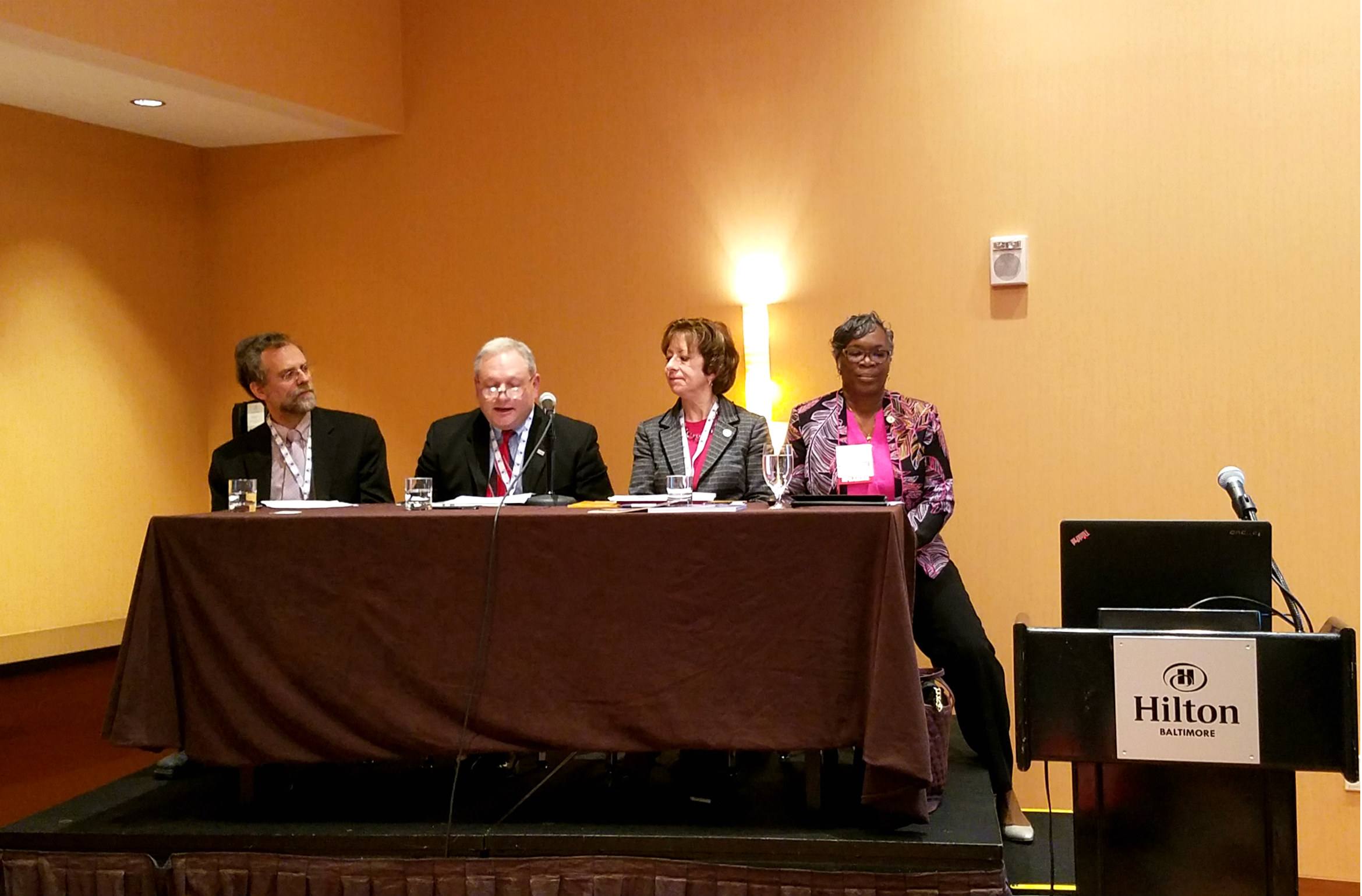BALTIMORE—It turns out that being glued to a device all day doesn’t do as much to make kids skilled at using tech as you might think. The National Assessment Governing Board’s assessment of 21,000 American eighth-graders’ technology literacy was the topic at “What Testing Technology and Engineering Literacy Means for Education” Friday at the U.S. News STEM Solutions Conference.
NAGB Deputy Executive Director Mary Crovo, Change the Equation Chief Operating Officer and Director of Research Claus Von Zastrow and Steven Barbato, the executive director and CEO for the International Technology and Engineering Educators Association, were present to discuss the findings and how the American educational system should adjust based on them.
Crovo provided some results, which found that 43 percent of tested students were deemed “proficient” based on the rigorous standards set by the NAGB. That includes 45 percent of girls who edged out boys by a “small but statistically significant” 3 percent.
Among other sub-groups, 56 percent of white students, 56 percent of Asian students, 28 percent of Hispanic students, and 18 percent of black students qualified as proficient. The results are available at www.nationsreportcard.com.
Data are only available at the national level. Crovo says there has been a “great deal of interest in getting down to the state or district level, but it’s a resource issue right now.”
Technology literacy is the capacity to use and evaluate technology and to appropriate use tools to find solutions to problems.
Von Zastrow emphasized the importance of the technology and engineering literacy testing because it helps quantify skills that employers have long known are valuable but been unable to gauge. He also says that the skills are valuable for everyone, not just people going into science and engineering.
“Survey after survey, employers complain that employees don’t know what to do when they are put in ambiguous situations, when there is no playbook for the situation,’ Von Zastrow said. Emphasizing literacy skills should help address that.
He then addressed that American students didn’t test very well.
“The assumption seems to be that just be breathing in this American atmosphere, we gain these skills [of innovation like Thomas Edison and Google], and the TEL assessment seems to indicate that that’s not the case. We have to be very intentional about developing these skills,” Von Zastrow says.
“We are at a place in American history where the moral and the economic thing to do happen to be the same, and that’s to spread these skills widely.”
Barbato advocated increased teaching of technology and engineering literacy. Starting from pre-K and extending all the way through higher education, he says that technology literacy needs to be a significant part of students’ curriculum. He also explained what that would look like.
“You have basically seven resources to solve a problem but all under constraints, and teaching [children] how to solve problems under constraints and working through and documenting them needs to start early, then ramping up the types of challenges we’re giving them throughout,” Barbato says. “Also, there will be failures. That has to be embraced as a teachable moment that we evaluate with the student so they accept that and move on.”


